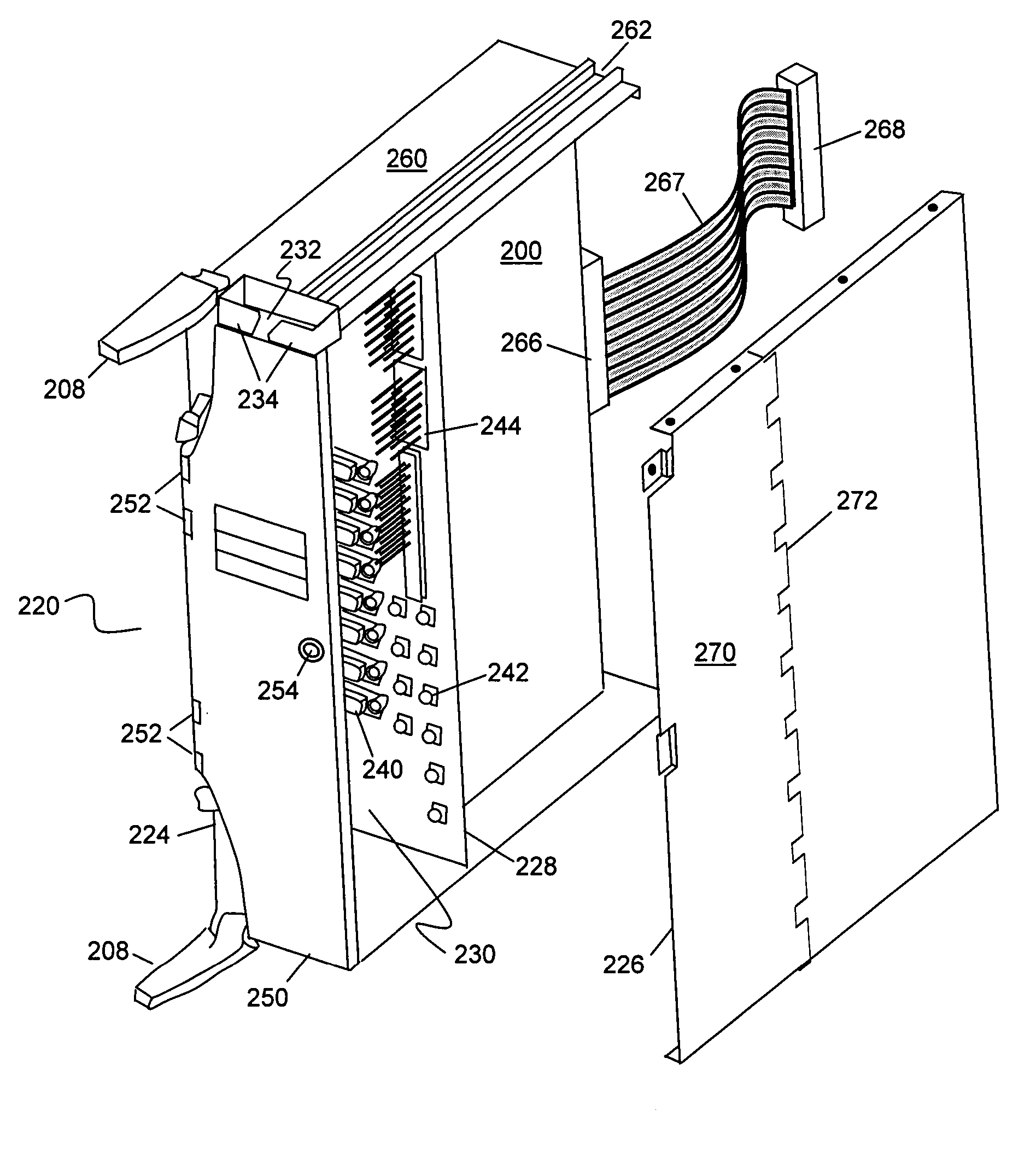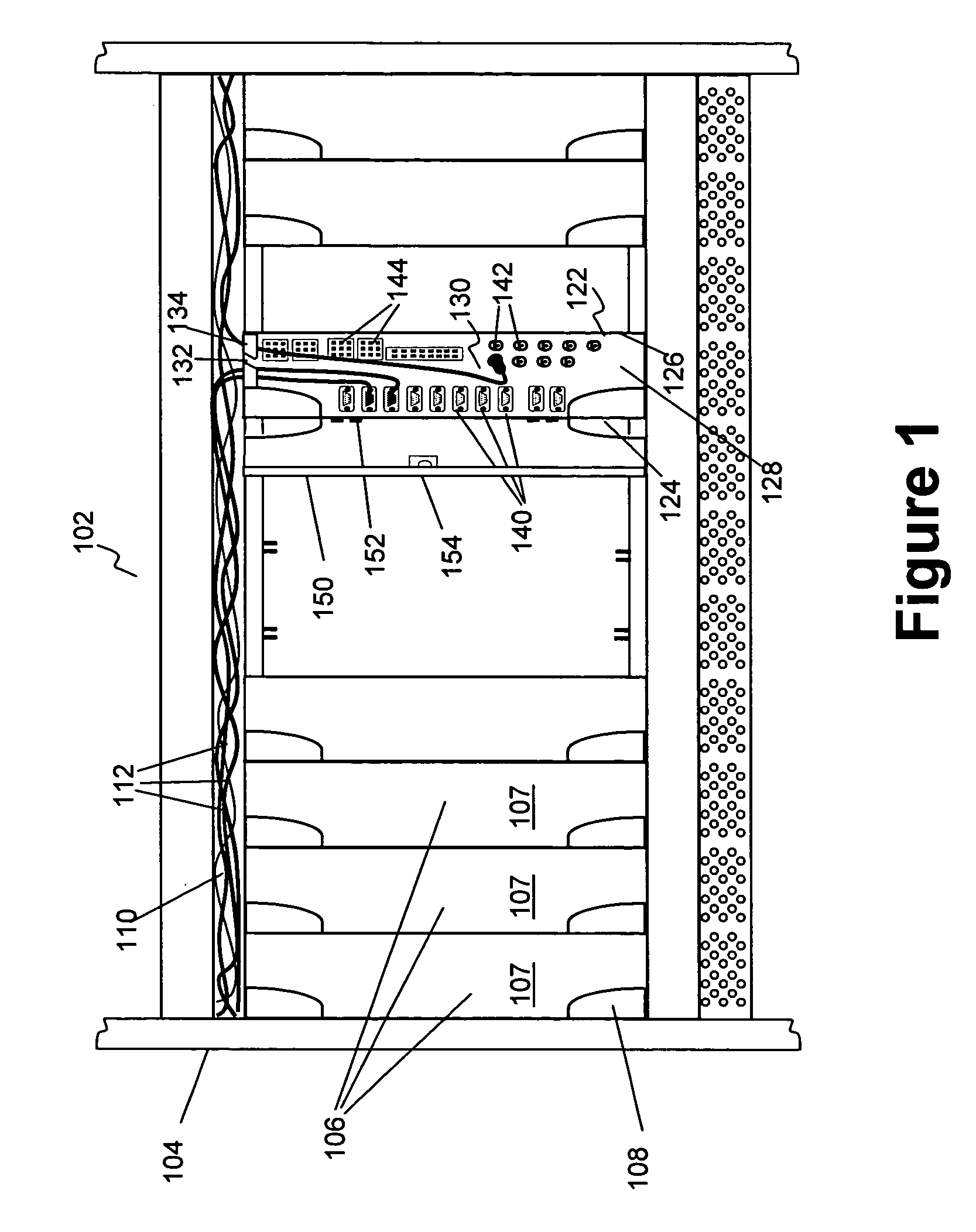Front access lan and timing (SATT)
a technology of front access lan and connector, which is applied in the direction of electrical apparatus construction details, coupling device connections, instruments, etc., can solve the problems of difficulty in cleaning and servicing optical fibers, difficulty in traversing shelf-to-shelf separation, and difficulty in approving and approving. , to achieve the effect of facilitating access and enhancing security of access covers
- Summary
- Abstract
- Description
- Claims
- Application Information
AI Technical Summary
Benefits of technology
Problems solved by technology
Method used
Image
Examples
Embodiment Construction
[0025]Referring to FIG. 1 there may be seen a shelf 102 for electronic equipment mounted in typical style on the frame 104 of a rack. Within the shelf are mounted circuit cards 106 adjacent to one another across the shelf and oriented vertically. Alternative arrangements may also provide for horizontal mounting (not shown). The circuit cards 106 have connectors at the rearmost edge which are mated to corresponding connectors located on the backplane or midplane of the shelf. The circuit cards have faceplates 107 at the foremost edge. These faceplates 107 serve a variety of purposes including providing mechanical stiffening, providing a protective front enclosure face for the printed circuit board assembly, providing a means for EMC / RFI shielding, providing a background for labelling purposes, and acting as a mounting point for display elements and switches. On the circuit cards may be seen card ejectors 108 which serve to mechanically assist in both seating the connectors, securing ...
PUM
 Login to View More
Login to View More Abstract
Description
Claims
Application Information
 Login to View More
Login to View More - R&D
- Intellectual Property
- Life Sciences
- Materials
- Tech Scout
- Unparalleled Data Quality
- Higher Quality Content
- 60% Fewer Hallucinations
Browse by: Latest US Patents, China's latest patents, Technical Efficacy Thesaurus, Application Domain, Technology Topic, Popular Technical Reports.
© 2025 PatSnap. All rights reserved.Legal|Privacy policy|Modern Slavery Act Transparency Statement|Sitemap|About US| Contact US: help@patsnap.com



